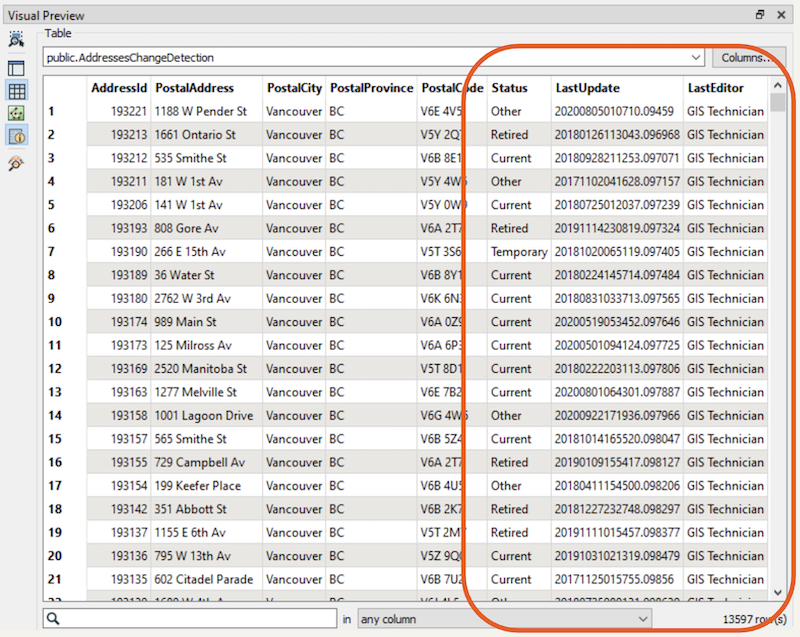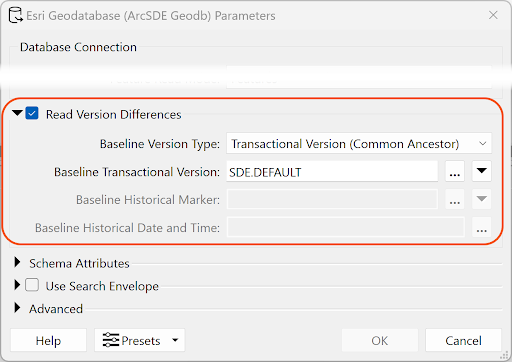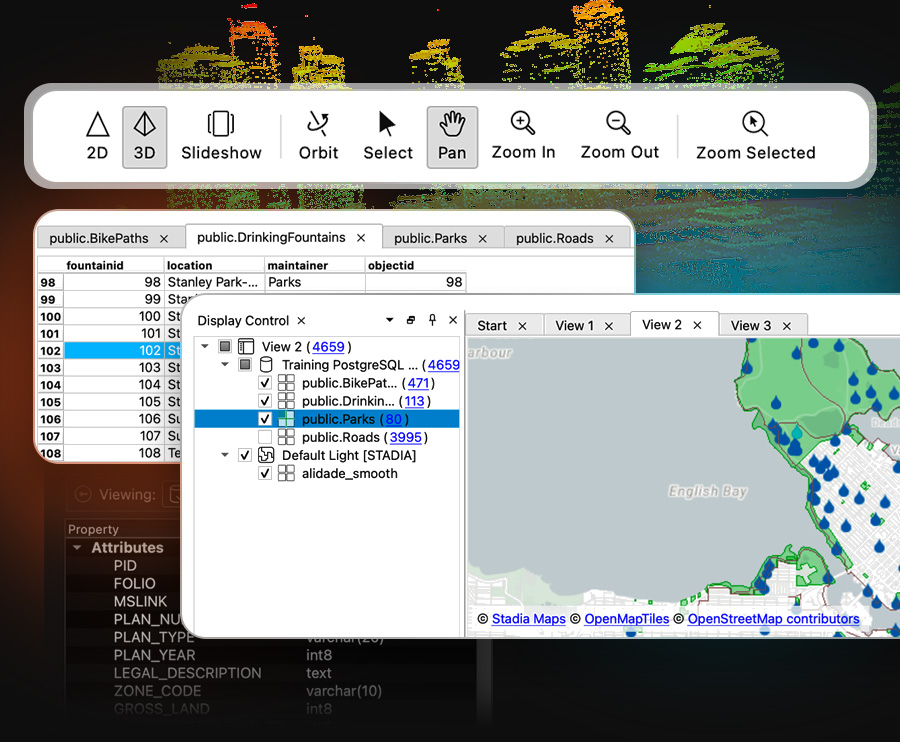When managing data, understanding how and why it changes is critical. By detecting changes early and accurately, you can streamline workflows, eliminate tedious manual checks, and focus on the records that matter. Automated change detection allows you to handle large datasets efficiently by processing only updated records, improve real-time responsiveness by reacting immediately to new changes, minimize data movement to reduce API calls and cloud storage costs, and align with enterprise-level data practices by tapping into existing change capture systems.
As discussed in the change detection blog and in part 1 of our change tracking webinar series, FME’s ChangeDetector is the key transformer for spotting differences between datasets. But for high-frequency updates, large-scale databases, or real-time needs, other strategies can offer better efficiency and responsiveness. Let’s look at four other techniques for detecting data changes.
For a deep dive into these scenarios, watch our webinar, “Managing Changing Data with FME: Part 2 – Flexible Approaches to Tracking Changes.”
4 flexible change detection methods
1. Filtering by modification timestamps
Use Case: CRM Systems
Easily identify updated customer records by filtering based on a ‘last modified’ timestamp field. This lightweight method reduces unnecessary data reads and improves workflow speed.
Pros:
-
Simple setup using
WHEREclauses or attribute filters. -
Minimizes data transfer and processing.
Cons:
-
Cannot detect deletions unless an additional deletion tracking mechanism is in place.
-
Relies on the accuracy of the timestamp field.

2. Format-specific change tracking
Use Case: Data Lakes with Built-In Versioning
Leverage Databricks’ Delta tables or other versioned storage systems to access historical versions and detect changes.
Pros:
-
Taps into existing platform capabilities like ACID transactions.
-
Highly efficient within supported ecosystems.
Cons:
-
Limited to specific data sources.
-
May require custom reader configuration.

3. Database triggers and webhooks
Use Case: Real-Time Inventory Management
Set up database triggers to send HTTP POSTs to FME Flow Webhooks when rows are inserted, updated, or deleted. This enables immediate reaction workflows, like restocking alerts.
Pros:
-
Real-time updates.
-
Captures all change types (inserts, updates, deletes).
Cons:
-
Requires database-side configuration.
-
Poorly designed triggers can impact database write performance.

4. Log-based change data capture (CDC)
Use Case: Financial Systems Audit Trails
Enable built-in CDC in systems like SQL Server to maintain a detailed log of all changes. FME can query these logs to build audit trails or rollback mechanisms.
Pros:
-
Comprehensive change history.
-
Highly reliable and scalable.
-
Can be polled for near-real-time updates.
Cons:
-
Requires administrative setup and access to log tables.
-
Some CDC connectors in FME may require additional licensing.
Choosing the right approach
| Method | Real-Time Capable? | Captures Deletes? | Setup Complexity | Ideal For |
|---|---|---|---|---|
| Modification Timestamps | No (scheduled) | No | Low | Routine updates |
| Format-Specific Tracking | No (scheduled) | Yes (varies) | Medium | Specialized platforms |
| Database Triggers + Webhooks | Yes | Yes | Medium-High | Instant reaction workflows |
| Log-Based CDC | Near-real-time (polling) | Yes | Medium | Audit and compliance |
Flexible change detection with FME
FME makes it easy to build and automate change detection workflows. Design and test workflows in FME Form that connect to your data sources, filter for changes, and process updates using transformers like the ChangeDetector, Tester, or direct SQL queries. FME also integrates with cloud services like AWS, Azure, and Google Cloud, enabling change detection at cloud scale. Once your workflow is ready, publish it to FME Flow to automate it.
With FME, you can:
-
Schedule regular change detection (e.g., every hour, day, or week).
-
Trigger workflows in real time using database webhooks or API calls.
-
Minimize data movement by filtering and processing only what’s changed.
-
Scale effortlessly for large datasets or enterprise systems.
-
Integrate easily with cloud storage, databases, and APIs.
Whether you need batch processing, real-time reaction, or cloud-based scalability, FME provides a flexible foundation for tracking and managing changing data.
Learn More
Tracking changing data is not a one-size-fits-all challenge. Whether your need is daily synchronization or real-time responsiveness, FME provides flexible tools to fit your strategy. By using the right method, or combining several, you can streamline operations, ensure data consistency, and respond quickly to change.
Tutorial: Change Detection in FME
Tutorial: Updating Databases: Using Change Detection to Set Operation Type




